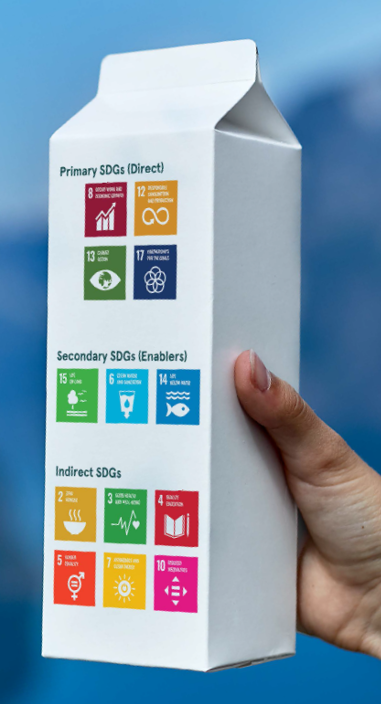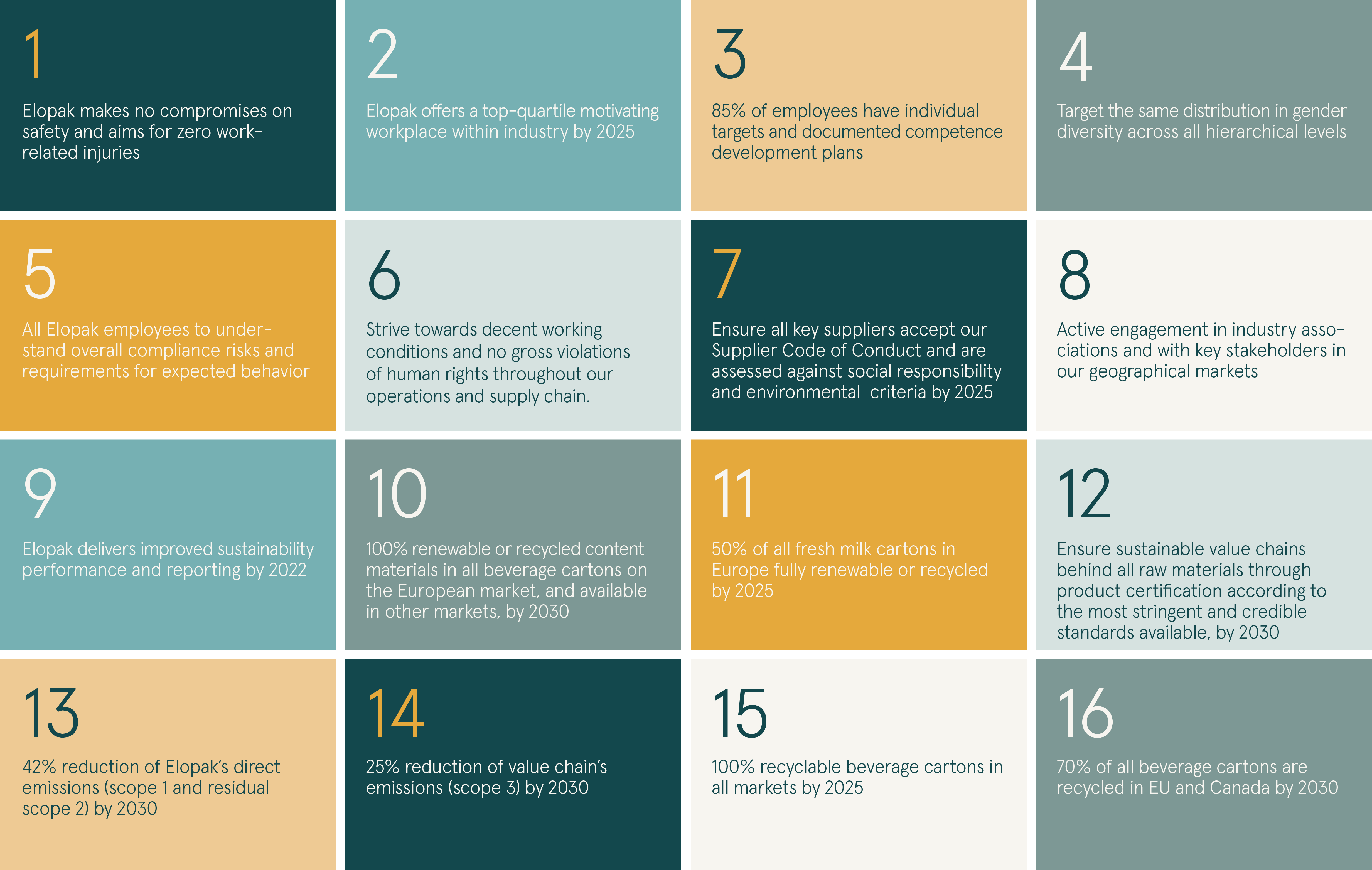Strategy
Elopak takes care of people through employment, health and safety, ethical conduct, and human rights, within the company and throughout the value chain.
We also strive to protect our planet by sourcing renewable raw materials through sustainable supply chains, continuously reducing greenhouse gas emissions, and ensuring the recycling of materials. Finally, Elopak aims for long-term financial viability and contribution to society by offering interesting and safe jobs and low-carbon, circular packaging that keeps products safe.
Elopak works in accordance with the UN Sustainable Development Goals (SDGs). The 17 goals, with a total of 169 targets, aim to ensure no one is left behind and cover all the key areas to ensure people can thrive and prosper on our planet. This goes hand-in-hand with Elopak’s global approach to sustainability.
Our approach to the SDGs includes the below evaluations, done in collaboration with key stakeholders:
-
- Which of the SDGs can our business and supply chain positively impact?
- Which of the SDGs can our business and supply chain potentially negatively impact?
- Which of the SDGs represent a risk to our business and supply chain if not successful?
- What will our company do differently in order to positively impact the SDGs?
- What is the potential indirect effect on other SDGs?
Based on these, we defined four key SDGs


Goal 8: Decent work and economic growth
We create work for many people in our business and supply chain. Historically, we have had a strong focus on labor and ethical practices in our company. We now further increase this focus throughout our supply chain and build the skills and employability of our employees.

Goal 12: Responsible consumption and production
We are dependent on renewable natural resources, and the way we source fiber is a great opportunity for Elopak to contribute to sustainable forests. We have targets for sourcing certified raw materials and helping improve recycling in all steps of our value chain.

Goal 13: Climate action
We take urgent action to combat climate change and its impact. Elopak is fully aware of our responsibility in the global increase of greenhouse gas emissions. We work to reduce our emissions from our operations and supply chain, and with ambitious Science-Based Targets in place, we commit to reducing our impact further.

Goal 17: Partnerships for the goals
We cannot achieve the SDGs working alone, and we have been working with suppliers and customers to reduce emissions and the use of raw materials. Strong international cooperation is needed now more than ever to ensure that countries have the means to recover from the pandemic, come back stronger and achieve the SDGs.
Elopak's stakeholders
Stakeholder engagement is crucial to guide us towards the issues that matter the most to us. Engaging with partners and associations also provides the same valuable input to the company and broadens our horizons. Our engagement includes frequent contact with key stakeholders, and Elopak has focused on qualitative interviews rather than quantitative data. The table below shows the approach Elopak has taken towards stakeholders over the past years.
Our material topics (topics reflecting our main impacts) have been identified and defined based on interaction with our stakeholders.
Elopak’s Group strategy is managed through an annual business planning process where the company defines some key priorities. Each business unit defines its Must-Win-Battles, which are granulated down to individual targets for employees. This structure entails the entire organization and strategic approach, including the sustainability program. Read more about Elopak’s Group strategy in our annual report.
The sustainability program is an embedded part of the overall group strategy, and responsibilities for various sections are placed throughout all business units. The Group Leadership Team (GLT) is the overall steering committee of the program and reviews the performance on a quarterly basis. The Board of Directors is overall responsible for strategy approval and implementation.
Our sustainability program consists of 16 targets divided into our material topics. The targets are linked to specific strategic initiatives owned by relevant business areas. Specific KPIs are defined to measure and report progress and continuously adapted to reflect our ambitions, some of which refer to the GRI framework; others are more specific to our industry and hence self-defined.
In 2022, Elopak will review the current sustainability program with the objective of including stakeholder engagement and a risk-based approach (including climate risk assessments in line with TCFD). We will also further streamline targets, initiatives, and KPIs to ensure the continued relevance of these.

